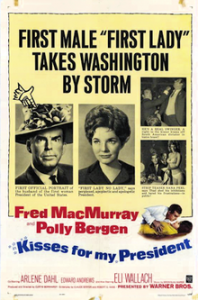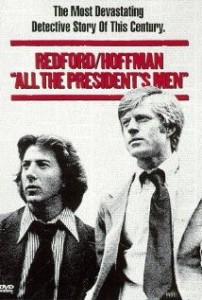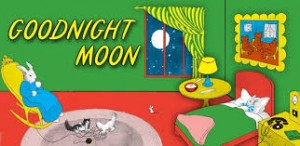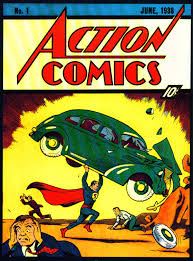Interview: Mike Canning of Hollywood on the Potomac
Posted on June 22, 2013 at 6:54 pm
 Mike Canning generously took the time to answer my questions about his marvelous book, Hollywood on the Potomac: How the Movies View Washington, DC
Mike Canning generously took the time to answer my questions about his marvelous book, Hollywood on the Potomac: How the Movies View Washington, DC. It is a comprehensive and completely fascinating discussion of more than 50 movies set in Washington, from the silly to the serious, with comedy, romance, drama, and of course a lot of politics. This week’s release of “White House Down” is a good reminder to check out some of these other films. In addition to the ones he mentions, I’d suggest “Without Love” (Tracy and Hepburn decide to have a loveless marriage in WWII-era Washington) and “Houseboat” (widower Cary Grant hires Sophia Loren as a nanny).
What’s your favorite Washington movie?
My view combines part of “favorite” and “best.” It’s “All the President’s Men” (1976) both because it was, and  remains, a completely engrossing suspense film plus it is rigorous in both sticking to the real events of the Watergate cover-up and using actual Washington locations. I still love “Mr. Smith Goes to Washington” (1939) because it is an absolute classic and “Being There” for its singular, sardonic look at our politics, but “All the President’s Men” leads the list.
remains, a completely engrossing suspense film plus it is rigorous in both sticking to the real events of the Watergate cover-up and using actual Washington locations. I still love “Mr. Smith Goes to Washington” (1939) because it is an absolute classic and “Being There” for its singular, sardonic look at our politics, but “All the President’s Men” leads the list.
Which Washington movies have the most outrageous mistakes?
I highlight a couple in my book: “No Way Out” (1987) because of its corkscrew chase sequence where lead Kevin Costner tries to escape two hit men by dropping off the Whitehurst Freeway, sprinting along the C & O Canal, only to run into the “Georgetown” subway stop—which, most famously, has never existed. Once inside the station, he jumps on to the Baltimore subway, only to emerge into the Old Post Office Pavilion—where there is no subway either! Another multiple-abuser of DC occurs at the end of “The Contender” (2000). President Jeff Bridges, eager to name his new vice president (Joan Allen), “calls” a joint session of Congress (oops, it’s the other way around), misidentifies the Speaker and the president of the Senate in their chairs, and then calls for “an immediate roll call” to confirm his nominee (whatever happened to separation of powers?). He performs these egregious acts in a painfully small House chamber with visible windows (it’s actually the Virginia State House).
How does the portrayal of Washington change over the decades?
The principal way it has changed physically is that mounting security concerns have restricted more and more the access to some major iconic sites, such as the Capitol building. In the early post-war years, access to the Capitol and the legislative office buildings was ample, but security concerns gradually limited location shooting in and around the Capitol to where now commercial filmmakers can only shoot blocks in front and back of the building. That’s why, since the 1980’s, so many movies have scenes at the Grant Memorial in front of the Capitol’s reflecting pool—it’s as close as productions can get. Access to other monuments (like the Lincoln Memorial) has also been limited. One location exception is the use of the Metro system. Since the Metro began in 1976, access to shooting was confined to entrances to stations, never down inside. That limitation was lifted in 2007, and some recent Hollywood films (like “State of Play”—2009) have been allowed to shoot down the escalators and on to the station floor.
As far as how the portrayal of Washington has changed in thematic terms, I would say that, while commercial cinema has almost always treated politicians (executives or congressional) negatively, the cynicism about politics has escalated over the years, Politicians in films of the 1940’s and 1950’s (perhaps reflecting the national mood) were relatively benign figures, but, since the 1960’s and onward, their depiction (esp. in Congress) almost universally treats them as either simple-minded or venal. Many, perhaps most, Washington-themed movies feature political themes and characters, and the predominant spirit for years has been a depressing sourness about all things political, even more so since the 1990’s.
To note: what rarely appears anywhere in current DC films is any representation of how real politicians work or how regular citizens of the city live.
Who are some of the biggest stars who actually filmed on location in Washington?
Clint Eastwood comes immediately to mind. He has made three significant DC movies, “In the Line of Fire” (1993) in which he starred as a Secret Service agent, and two films he directed, “Absolute Power” (1997) and “J. Edgar” (2011). Eddie Murphy was a mega-star when he made “The Distinguished Gentleman” (1992), as was Arnold Schwarzenegger in “True Lies” (1994), Michael Douglas in “The American President” (1995), and Will Smith in “Enemy of the People” (1998). Denzel Washington has appeared in several Washington-themed movies (“Pelican Brief” – 1993), “Courage Under Fire” – 1995) and “The Manchurian Candidate” – 2005)) and Tom Hanks in two, at each end of his career: “The Man with One Red Shoe” (1985) and “Charlie Wilson’s War” (2007). Tom Cruise has two DC movies under his belt, “Minority Report” (2002) and “Lions for Lambs” (2007).
In earlier times, major stars included Cary Grant (“Houseboat”- 1958), Kirk Douglas (“Seven Days in May” – 1964), Robert Redford and Dustin Hoffman (“All the President’s Men”), and Peter Sellers (“Being There”).
Other than the White House, Capitol Building, and the monuments, what are some popular DC locations that show up in movies?
Certain thoroughfares that regularly allow location shooting are persistent in Washington movies, such as Pennsylvania Avenue (also because it lines up with the Capitol) Memorial Bridge, and the National Mall. There are a few stand-in sites, like the DAR building and the Mellon Auditorium of the Smithsonian, which are used because access cannot be gained to more prominent locations. Identifiable and picturesque neighborhoods also figure often, such as Georgetown and Capitol Hill, while many others are ignored. As noted above, the Grant Memorial—because it has become the western boundary on shooting the Capitol—features surprisingly often in Washington movies.
The fact remains that there are many lesser-known DC locations that could enhance Hollywood stories that are never or rarely used because filmmakers who come here have to obligatorily capture the Big Dome–if nothing else.
This year features three different movies about attacks on the White House. Why?
Serendipity. I think it’s just a fluke; such clustering sometimes happens when Hollywood’s commercial minds run in the same grooves. It could also be a hangover from action films spinning off popular TV shows like “24.” It should be noticed that two of the latest—“Olympus Has Fallen” and “White House Down”—were not shot (or barely shot) in  DC; they were essentially filmed in Shreveport, Louisiana, and Montreal.
DC; they were essentially filmed in Shreveport, Louisiana, and Montreal.
Attacks on the seat of executive power are a recurring trope for DC movies, from as far back as sci-fi movies in the 1950’s (“Earth vs. the Flying Saucers” – 1956). Other clobberings of the White House occur in “Superman II,” “Independence Day,” and “2012.”
What are some other classic portrayals of the White House in movies?
Though no movie has ever been permitted to shoot in the White House, some films have produced convincing re-creations of the mansion, especially its Oval Office. An early attempt (which was a bit too grandiose) was in “Wilson” (1944), but a better exemplar was the fine office fabricated for “Seven Days in May.” More recent excellent examples of the Oval Office appear in “Dave” (1993), and “The American President.” In the former case, Warner Brothers studio not only crafted good interiors but constructed a convincing scale model of the building seen from the South Lawn. In the latter case, director Rob Reiner and his production team gained ample access to study the White House and then carefully duplicated the Oval Office as well as a number of other important internal spaces. The most convincing display of authentic White House political action was in “Thirteen Days” (2000), a study of the Cuban Missile Crisis.
A classically bad portrayal of the White House was in “Gabriel Over the White House,” a strange Depression-era picture starring Walter Huston as a near-fascist reformer. His “White House” is an absurd studio set.
Who is the best film President?
Hands down, Daniel Day Lewis as “Lincoln” (2012). Not only is the performance commanding but the president portrayed is magisterial. Plus, he is the only “president” to win an Oscar! In its day (1944), Alexander Knox’s interpretation of Woodrow Wilson in “Wilson” was also deemed superior. Bruce Greenwood did a fine turn as JFK in the documentary-like “Thirteen Days” as did stalwart Henry Fonda in “Fail Safe” (1964). A couple of recent kick-ass presidents were flyboy Bill Pullman in “Independence Day” (1996) and Harrison Ford fighting some Russkies in “Air Force One” (1997).
Who is the worst?
I nominate Gene Hackman as President Richmond in “Absolute Power.” Not only is he a philanderer, abuser, and liar but he uses his Secret Service detail to cover up the murder of his mistress. He’s a bad dude. On the comic side, probably Christopher Jones as the under-age Max Flatow in the execrable “Wild in the Streets” (1968). Second place may go to Dan Hedaya as a demented Nixon in “Dick” (1999).
Of the lesser-known movies in your book, which most deserve to be watched again?
I would argue for the great George Stevens’ smart war-time comedy “The More the Merrier” (1943—a smart wartime comedy), “Seven Days in May” (crisp thriller about a military coup attempt), and “The Seduction of Joe Tynan” (1978–a rounded look at a US senator). Among the more contemporary, I think these deserve a look: “Wag the Dog” (1998–a prescient, tart black comedy), “Shattered Glass” (2003–a serious journalistic drama based on real events) and “Slam” (1998–a DC movie which gets into the cracks and crevices of our city which other movies mostly ignore).
Which is the scariest movie in the book? Which is the funniest? Which is the most historically accurate?
The scariest remains “The Exorcist” (1973), a monumental horror film of its time and still the only significant effort in this genre ever made about DC.
For me, the funniest are the oldies, like “The More the Merrier” and “Born Yesterday” (1950). On the mordant side, “Being There” is the best; on the sweet side, perhaps “Dave.”
The most historically accurate are “Lincoln” and “Thirteen Days.”


